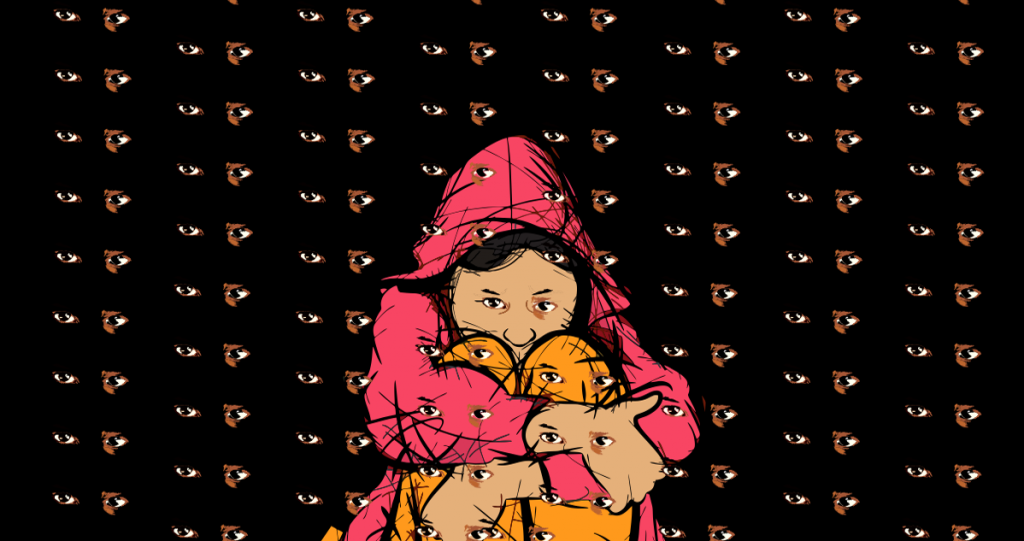Child Sexual Abuse has reached epidemic proportions in India. According to a 2007 MWCD-Child-Abuse-Report one in every two children has been sexually abused in our country. It is therefore crucial to put an end to this menace. Here is a ready reckoner on how to spot and stop child sexual abuse.
Types of Child Sexual Abuse
A child can be subject to sexual abuse in many different and often not very obvious ways. In order to spot and stop sexual abuse one must first understand what all constitutes sexual abuse.
- Touching a child’s intimate parts (penis, vagina, anus, buttocks, groin, chest, nipples) whether is a child is clothed or not
- Making a child strip and/or perform sexual acts including masturbation
- Taking, downloading and/or viewing sexual images of children
- Making a child perform sexual acts infront of a webcam
- Performing sexual acts infront of a child
- Making a child watch pornography
- Penetrative sexual activity with a child
Spotting tell tale signs of abuse
According to the same report by Ministry of Women and Child Development, in 50 percent of the cases the perpetrator is either known to the child or is in a position of power and trust. It is therefore important to be vigilant to the following signs:
Avoiding the Abuser: This is the most common and surest sign of sexual abuse. Often this person is the one who insists on giving the child a bath or taking the child to the bathroom. This is most likely where the abuse takes place.
Dropping Hints: While children are often not empowered with the correct vocabulary to vocalise their abuse, they do drop hints hoping their parents or a trusted adult might understand. These are usually very subtle hints like always hiding behind a trusted adult in the presence of the abuser. Sometimes the child might just say they don’t like a particular adult. It is important to not dismiss these complaints out of hand.
Affect on Performance in School: Abused children are often too traumatised to concentrate on their studies. Often they internalise their feelings due to overbearing guilt or shame, even though sexual abuse is never the survivor’s fault. This reflects in their grades.
Self Harm: Child Survivors of Sexual Abuse often end up engaging in a variety of self harm practices including but not limited to cutting themselves, slitting wrists, burning themselves or engaging in high risk behaviour like jumping off high surfaces, eating or drinking poisonous substances etc.
Physiological Changes: The child might develop health problems including but not limited to injuries, soreness and infection in the private parts, sexually transmitted diseases, pregnancy etc.
Psychological Changes: The child might display visibly different behaviour. A usually outgoing child might suddenly become withdrawn or a shy or quiet child might suddenly display extremely aggressive behaviour. Some children might also have trouble sleeping, eating and some might even end up wetting the bed. Some children also have nightmares.
Inappropriate Sexual Behaviour: Abused children often engage in age inappropriate sexual behaviour like masturbation at a very young age or making sexual overtures at older children and adults. They might also use sexually explicit language.
How to Stop Sexual Abuse
Listen without judgment: Children often speak about abuse but in terms where it isn’t very clear. So if a child says that a certain uncle always plays with his bums or tickles her between the legs, don’t dismiss it as the child’s hyperactive imagination.
Stand up to the abuser: Confront the abuser and don’t be afraid of reporting them to the authorities. It is a greater family shame if such behaviour is allowed to continue instead of unmasking such monsters. Make sure your child knows you are on their side and not afraid of punishing the abuser.
Sexuality education: Age appropriate sex education is possible and necessary. Children as young as three can be taught the correct names of their private parts and told that nobody is allowed to touch them there. If somebody forcibly touches them, the child should be encouraged to tell you immediately.
Setting physical contact boundaries: Children are not toys. They are not for showing off to friends and neighbours. Never force a child to hug, kiss, sleep next to or dance for any adult. Also, never refer to any adult as the child’s boyfriend or girlfriend.
Neighbourhood watch: It is wise to form neighbourhood watch committees to keep an eye on strangers, especially those interacting with children such as nannies, candy or comic book sellers, school bus conductors, etc.
Build confidence: Your child has to trust you and you have to win his trust with actions and not mere words. Show your child that you trust them by respecting their boundaries. Intrusive parents who don’t respect their child’s privacy often drive children away to predatory adults who create a ruse of giving the child their privacy in order to mentally manipulate and eventually sexually exploit them.
Don’t give up: It is possible to move forward in life despite being sexually abused as a child. Don’t take our word for it. Listen to Child Sexual Abuse survivor Harish Iyer.
This post was first published on Nov 29, 2017. It is being republished on International Day of Human Rights to reaffirm CJP’s commitment to fighting against Child Sexual Abuse.
Feature Image by Amir Rizvi

